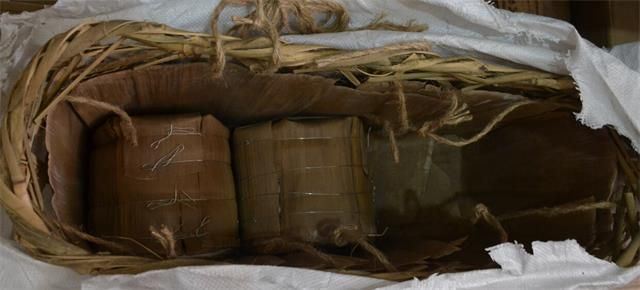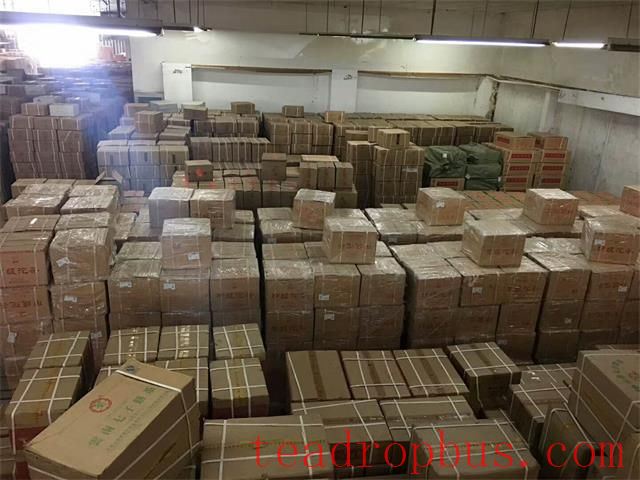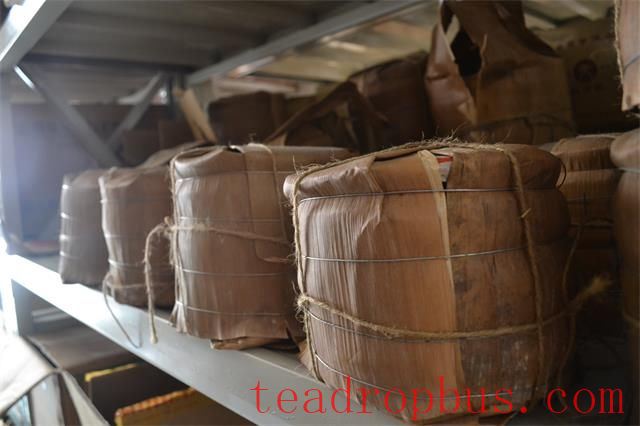Puer Tea is a type of tea that withstands storage, and proper storage is a critical part of its processing. Unreasonable storage methods can degrade the quality of Puer tea.
Puer tea differs from Green Tea, Oolong Tea, and Black Tea in terms of storage, as it requires a combination of microorganisms, enzymes, moist heat, and oxidation to complete its post-processing. Therefore, Puer tea should not be stored at low temperatures or in an oxygen-free environment. The packaging material used for storage should be breathable.
The changes in the aged quality of Puer tea are significantly correlated with temperature, time, and moisture content. Microorganisms play a positive role in the aging process of Puer tea. The life activities and metabolic products of microorganisms are important factors in the formation of Puer tea's quality, which is crucial for developing its sweet smoothness, richness, vitality, and aged aroma.
Materials and Oxygen

Puer tea requires a combination of microorganisms, enzymes, moist heat, and oxidation to complete its post-processing, so it cannot be stored at low temperatures or in an oxygen-free environment. The packaging material used for storage should be breathable.
To provide adequate oxygen, the storage room for Puer tea should be well-ventilated, but the air flow should not be too rapid, as this could cause the tea to become bland, lose its aroma, and darken in color.
Light
Under light conditions, the contents of amino acids, caffeine, and tea polyphenols are respectively 6%, 3%, and 7% lower than those under shaded conditions. Storing Puer tea under light conditions accelerates the browning of the tea.

Therefore, Puer tea needs to be stored away from direct light. Long-term exposure to sunlight can give the tea a throat-locking sensation, a smoky flavor, and increased bitterness.
Temperature and Humidity
Xing Qianqian et al. suggest that the temperature should be maintained around 25°C, and the average humidity controlled below 75% for the development of high-quality Puer tea. Temperatures averaging above 28°C are not conducive to the formation of good Puer tea quality.
Different storage temperatures result in different flavors in Puer tea. At room temperature, the predominant flavor is aged aroma, while at 37°C, the initial phase has an aged aroma, and later phases develop a sweet fragrance. Storage at 55°C initially produces a jujube-like flavor, but prolonged storage can lead to a sour smell, degrading the quality.
Wang's study shows that room temperature and 45°C storage are beneficial for ripe cakes and loose tea, enhancing their aroma, while 25°C and 35°C storage is disadvantageous, making them more prone to mold.
Time
The influence of time on chemical component changes during the storage of Puer tea is greater than that of temperature.
According to the national standard GB/T22111—2008, Puer tea can be stored for a long time in a suitable environment.

Puer tea requires long-term storage (10 years or more) for fermentation to enhance its flavor and aroma.
Naturally aged raw Puer tea, without the pile-fermentation process, benefits from aging for 10 to 20 years.
Ripe Puer tea, due to its pile-fermentation process, is best after being stored for 3 to 5 years.
However, the storage time for Puer tea is not always the longer, the better. Both raw and ripe Puer tea have an optimal period. Before this period, the quality improves, reaching a peak, but after that, the quality gradually declines.
During storage, if the environment becomes polluted, the storage location should be changed immediately, or storage should be stopped. When the color, aroma, and taste of Puer tea reach their best state, there is no need for further storage. Therefore,
the storage period for Puer tea is difficult to standardize.
Moisture Content of Tea
The moisture content has a significant impact on the aging quality of Puer tea. The rate at which tea absorbs moisture depends not only on the relative humidity of the surrounding environment but also on the initial moisture content of the tea itself. Teas with lower initial moisture content absorb moisture faster and in larger quantities than those with higher initial moisture content.

Shen Liping et al. found that high temperatures and low moisture levels are favorable conditions for storing Puer tea, preserving the color and aroma of the tea. Low temperatures and high moisture levels accelerate the molding of Puer tea.
Gong Shuying et al. found that a moisture content of around 9% in finished Puer tea is most conducive to the formation of its quality and style.
During storage, the moisture content of the tea changes in a curved upward trend, with the rate of increase first being fast and then slowing down. Different manufacturers produce Puer teas with varying moisture contents, and due to differences in products and storage environments, the moisture content of Puer tea during storage is difficult to standardize.
Some of the text references include Yang Wei's “Flavor Components of Puer Tea and Their Relationship with Quality” and Fan Xiaowei's “Study on Quality-Related Chemical Components During the Processing of Raw Puer Tea.”